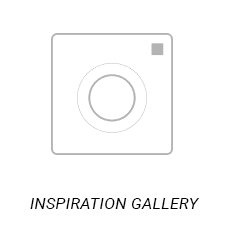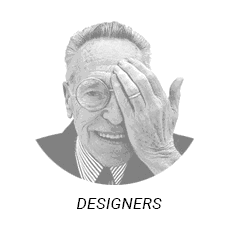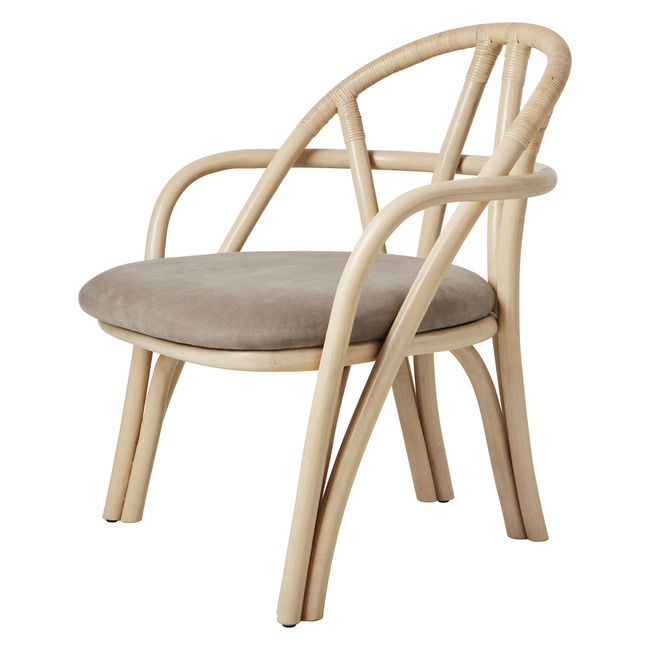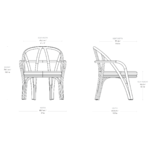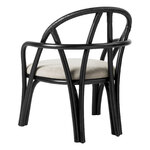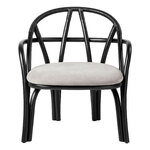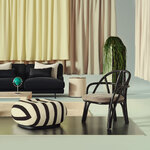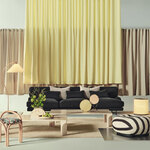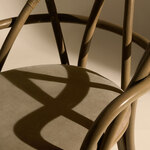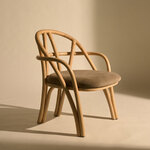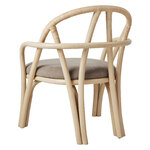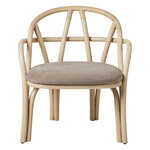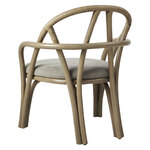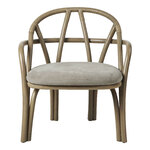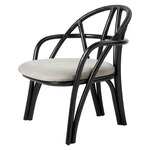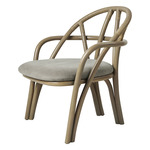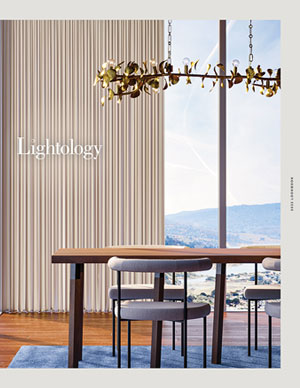Bistra Lounge Chair
By Michele De Lucchi, for Gubi
Bistra Lounge Chair
By Michele De Lucchi, For Gubi
$1,399.00
Finish:
Natural Rattan
Usually leaves warehouse in 6-8 weeks
Based upon stock availability.
$1,399.00
+ FREE SHIPPING
SPEC #: GUB1456352 | ID: 10141625
Bistra Lounge Chair
SPEC #: GUB1456352
ID: 10141625
Designed by Michele De LucchiRead Bio
Designed by Michele de Lucchi's architectural practice AMDL, the Bistra Lounge Chair offers a sculptural look with its steam-bent rattan structure. A modern take on the classic bistro chair, Bistra draws inspiration from the idea of organic growth, as seen in its sinuous curves and elegant use of negative space.
Available Options
Specifications
- Finish: Natural Rattan
- Color: Fustagno 02
- Size: 27"W x 30.8"H x 25.5"D
- Product Weight: 16.50 lbs
- Materials: Wood, Fabric, Rattan, Foam
- Arm Height: 22.6"
- Seat Height: 16.5"
- Distance Between Armrests: 24.5"
- Country of Origin: Poland
Specification Sheet / Technical Files

About Michele De Lucchi
Michele De Lucchi started studying architecture at Padua University, switching to Florence University, where he received his diploma in 1975. For two years afterwards, he taught architecture there as an academic assistant. In 1973, Michelle De Lucchi joined forces with other designers and architects to form Cavart, a radical design group.
In 1978, Michele De Lucchi went to Milan to work for Kartell as a designer at Centrokappa, the proprietary Kartell design studio. After meeting the designer Ettore Sottsass, Michele De Lucchi joined the Studio Alchimia designers. For Studio Alchimia exhibitions, Michele De Lucchi came up with several bizarre and comical designer objects, including the 1978 "Sinerpica" table lamp, which was virtually useless as a lamp, as was "Sinvola" (1979), which looks like an outsize pincushion with a rod bearing a light bulb stuck through the middle.
In 1979, Michele De Lucchi also designed several prototype household appliances, which were shown at the Milan Triennale but never produced. From 1980, Michele De Lucchi belonged to Memphis, the designer group around Ettore Sottsass.
In 1982, Michele De Lucchi designed "Lido", a colorful sofa, and, in 1983, the "First" chair for Memphis. In the late 1980s, Michele De Lucchi again returned to good design, landing a bestseller in "Tolomeo", a clearcut, functional aluminium work lamp he co-designed with Giancarlo Fassina for Artemide in 1987.
In 1990, Michele De Lucchi found a small business of his own for making lighting that was neither complex nor had to take into consideration the demands of mass production so it could be produced by craftsmen working in the traditional manner. The Michele De Lucchi milky white lamps "Fata" and "Fatina" of handblown Murano glass date from 2001. On the side, however, Michele De Lucchi continued to work with his design studio for large companies. Since 1979, he had been a design consultant for Olivetti. In 1993, Michele De Lucchi designed branches of Deutsche Bank, in 1995 a shop system for Mandarina Duck, and, in 1997, the Deutsche Bahn travel center in Frankfurt.
Shop This Designer
Founded in 1967 by Gubi and Lisbeth Olsen, the brand is defined by a passion for the past as well as the present. Gubi is a distinctive international design icon. Hunting down forgotten design icons like Greta Grossman, Jacques Adnet, and Mathieu Mategot, Gubi brings designs from the thirties through the seventies back to life, the collection is rounded out by collaborations with up and coming designers, forming a highly versatile brand. Gubi lights are as eclectic as they are provoking, a product of each designer's courage, instinct and curiosity. With simple yet striking shapes, unique materials and innovative techniques, Gubi is a contemporary vision. Gubi effectively blurs the lines between past and present, delivering symbolic lamps that leave a powerful impression on both the eye and imagination.
Explore GubiOptions
Reviews
No Reviews




